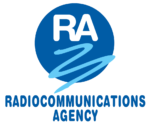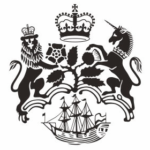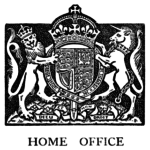Licensing History

UK Licensing has evolved enormously over time – both regulators as well as the terms.
 Below are some reminders from the past to which we may gradually add from time to time. Note that these are not current and operating should be based on the latest Ofcom licence terms.
Below are some reminders from the past to which we may gradually add from time to time. Note that these are not current and operating should be based on the latest Ofcom licence terms.
- Oct-2004: 7.1-7.2 MHz allocation
- Oct-2003: Changeover Notice from Radiocommunications Agency to Ofcom
- 26 Jul-2003: End of Compulsory Morse,
(London Gazette – merger of old Class-A/B) and BR68 variation, Intermediate variation - 20-Jun-2003: RA Consultation – Morse, Satellites and Microwaves
- 2002: 5MHz Experiment – Application Form, RA Notice
- Jan-2002: BR68/I Intermediate Amateur Licence – Rev-8
- Nov-2001: BR68/F Foundation Licence, Application form – RA395
- Nov-2001: End of Class A/B (M5 series) – Change from 12 to 5wpm Morse
- Jan-2001: Novice Licence Information Sheet – RA166, Rev-10
- Jan-2001: Former Citizens Band Licence – RA369
- Nov-2000: BR68 Amateur Licence – Rev-9
- Jun-2000: Novice Licence Information – RA166, Rev-9
- Mar-2000: EMC leaflet – RA234, Rev-5
- 1994/5: BR68 Amateur Licence (A) or (B) – Iss-1 Rev-0
- 1992: UK Novice Licence – Info article and frequency schedule

Earlier Items
- 30-Jan-1998: 136kHz allocation
- May 1988: DTI Licensing, Fees
- Jul-1989: WARC Band Restrictions Lifted
- Oct-1987: 50 and 70MHz allocation information
- May 1987: 50 and 70MHz expansion
- Sep-1984: Frequency Schedule reform – RSGB News, Gazette Notice
UK 50 MHz / 6m Band
- Dec-1985: 50.0-50.5 MHz Licence Variation – UK Primary allocation
- Dec-1985: 50MHz permits end – withdrawal notice
- Nov-1984: 50MHz Permits – Second Batch and conclusion
- Jun-1983: 50MHz RSGB updates
- Apr-1983: 50MHz Operation
- Apr-1983: 50MHz RSGB Feedback Request and News
- Feb-1983: 50MHz Guidance
- Feb-1983: 50MHz RSGB Information
- Jan-1983: 50MHz Permit and Licence variation
- Nov-1982: 50 MHz Parliamentary Reply – Hansard
- Oct-1982: 50MHz Application Questionnaire

1970s/1980s
- Sep-1982: 18 & 24 MHz and Microwave bands – Notice
- 25-Jun-1982: Amateur Licence Class-B
- July-1981: How to become a radio amateur
- 1981: Becoming a Radio Amateur – RSGB
- 1981: Introduction to Legal CB – 27 and 934MHz FM
- 20-Aug-1981: Radio Control exemption reply
- Feb-1980: WARC-79 Report – new bands – except for 50MHz
- 03-Jan-1978: Amateur Licence Change Letter
- 14-Aug-1977: Amateur Licence Class-A
- 1976/8: 24 GHz Permits – Jul-1976, Mar-1978, Sep-1978, Application
- 1974-1984: 24GHz Permission & Guidance
- 12-Sep-1975: Amateur (Sound Mobile), Cover Letter, Licence Notes
Earlier History
- Feb-1969: Sound Licence B Issue-Letter and Licence/Terms
- Dec-1968: City & Guilds Syllabus, Exam and Pass Certificate
- 1968: How to become a Radio Amateur
- Jan-1966: Class-B Sound and TV changes
- Sep-1964: Class-B Amateur Licence
- Aug-1964: Licence changes: Sound Licence-A letter, Change Notes
- June-1964: 70MHz Expansion – to 70.1-70.7 MHz
- 1964: Mobile Sound Licence
- 1963: Sound Licence Frequency Accuracy Table
- May-1961: Updated Frequency Schedules
- 1958: Amateur Sound Licence
- 1958: How to become a Radio Amateur
- Oct-1956: 23cms Expansion – addition of 1300-1325 MHz
- May-1953: Top-band Reduction – withdrawal of 1715-1800 kHz
- 1952: 14MHz and 21MHz changes
- Apr-1949: 56-60MHz – review and end of the 5m-Amateur Band
- Apr-1949: Early UK Callsign History
- 1948-49: VHF & Microwave Band changes – Gazette notices
- Oct-1947: Atlantic City ITU Radio Conference Outcome – RSGB Bulletin
- Jan-1946: Radio Again for Amateurs – post WW2: 28-29 & 58.5-60 MHz
- Nov-1927: Radio-Regulations – international frequency allocations
- 13-Feb-1922: Radio Amateur Licensing Statistics – Hansard


Note: All sources are gratefully acknowledged including: EI3IO, G3IUZ, G3PEM, G3PSM, G4BAO, GM4BDJ, G4DYA, G4IFX, GW4MBS, G6JYB, G8CLI,










